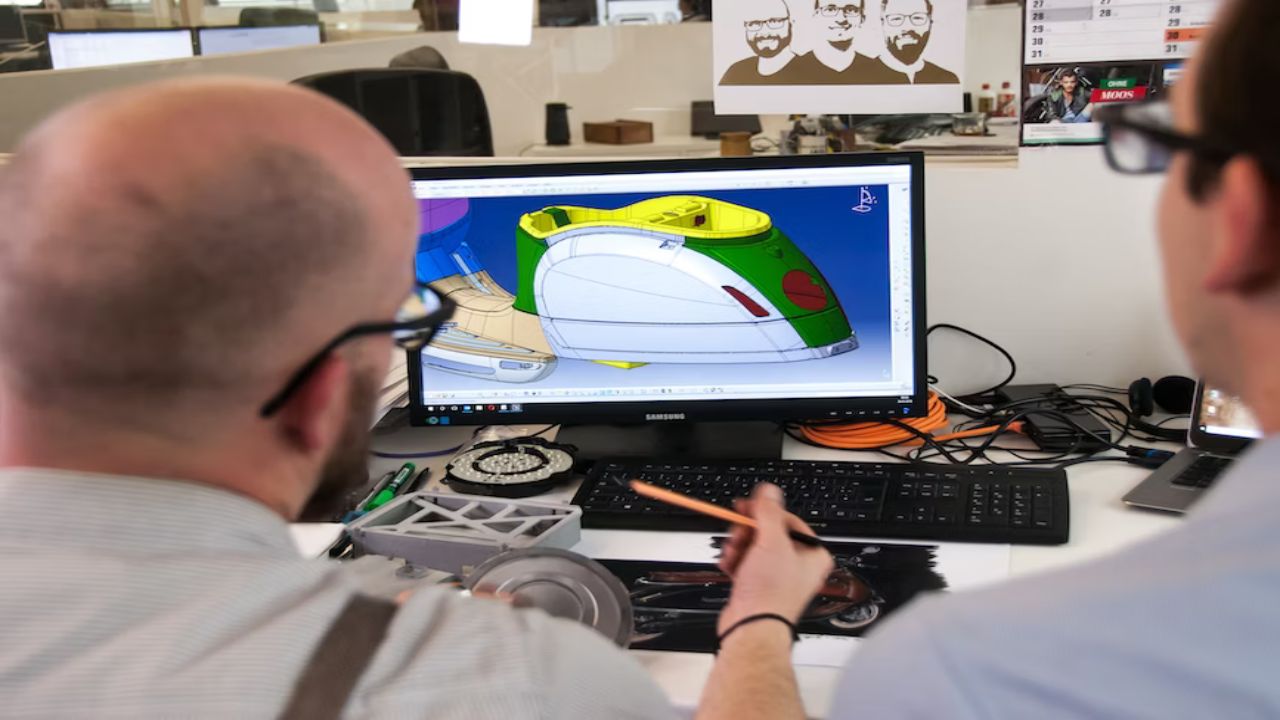6 New Trends and Innovations In Computer-Aided Design

Page Contents
As you venture into the vast universe of design and ingenuity, the pivotal role that Computer-Aided Design (CAD) takes on is simply undeniable. Be you an architect bringing intricate floor plans to life, or a product designer spinning novel ideas into reality – CAD tools have claimed their rightful place as your indispensable partner.
Let's explore some of the exciting new trends and innovations shaping this field, from riding the wave of automation in CAD, harnessing AI's power, and creating three-dimensional wonders to diving headfirst into virtual reality. Buckle up for this journey and prepare to be amazed at how far CAD technology has come!
1. Riding the Wave of Automation in CAD
Diving into the first trend, automation in CAD has taken center stage as a transformative force. It's pushing the frontiers of how professionals operate in architecture, engineering, and beyond.
With automation capabilities, repetitive tasks are becoming streamlined and error-free, boosting efficiency like never before. Think about capabilities such as auto-dimensioning or automated generation of assemblies – these are changing how designers work drastically.
Additionally, automation does not only save valuable time but also allows for increased precision. All things considered, it's indeed hard to ignore the outstanding wave of change that automation is bringing to CAD tools today.
2. The 3D Revolution: Advancements in CAD Modelling
One cannot downplay the leaps and bounds made in the world of 3D CAD modeling. Today, designers have the power to create parts with complex geometries effortlessly and bring their most intricate concepts to life – all thanks to advanced CAD tools.
This revolution isn't just about aesthetics though; it has significant practical applications too. For instance, when deciding between various software packages like Creo vs Solidworks, professionals often consider their advanced 3D modules as a key factor.
Such advancements in technology not only offer enhanced design capabilities but also result in more accurate simulations and analysis, paving the way for more efficient designs overall.
3. Redefining Creativity: AI in Computer-Aided Design
Navigating into the realm of artificial intelligence (AI) in CAD, we come across a fascinating crossover where creativity meets cutting-edge technology. By integrating AI with CAD tools, designers can now leverage machine learning to optimize designs or predict possible challenges beforehand.
Moreover, with AI's help, these tools can intelligently suggest modifications and alterations to comply with design rules and regulations. In essence, by assisting users during the design process, interpreting data patterns, and providing advanced solutions, AI is redefining how professionals are using CAD tools for diverse projects.
This powerful combination promises an exceptional surge in productivity along with remarkable innovation in the computer-aided design landscape.
4. Seamless Collaboration with Cloud-Based CAD Technologies
Moving into the next trend in our journey, cloud-based CAD technologies are changing the game by fostering seamless collaboration. These days, design professionals can access their work anytime, anywhere – all they need is an internet connection.
A team can collectively work on a project stored in the cloud, ironing out inaccuracies and improving designs in real-time. As the indispensable role of modern technology intensifies in our ever-accelerating world, these cloud-based technologies are emerging as indispensable tools.
Ponder this – they offer more than just the convenience of accessing your designs anywhere; they enable a pooling together of insights and expertise that refines those designs into outstanding results. Undeniably, the era of isolated workstations is well behind us!
5. Virtual Reality and CAD Integration
Dipping our toes into the pool of virtual reality, we find it merging with CAD systems to create an immersive design experience like none other. This surge of VR in CAD platforms allows designers to literally step inside their designs, scrutinizing every detail from all possible angles.
This unique blend of VR and CAD isn't just enriching design visualization – it's also refining product testing processes, providing realistic simulations even before the actual product is built.
Put simply, by marrying computer-aided designs with virtually real environments, innovators are crafting not only a better perception of spatial design but also enabling interactive modifications in real time. It's a game-changer, offering an entirely fresh and extraordinary perspective on designs!
6. Parametric Modeling
Landing on the final trend of our journey, we find that parametric modeling has emerged as a beacon of innovation in the CAD world. This technique allows designers to define whole classes of shapes, all based on mathematical equations and a set of specified parameters.
What could be more exciting than creating entire families of complex objects with just a few clicks? It's not just about saving time, but this also grants an unprecedented level of control over your designs.
Ultimately, parametric modeling is simplifying complexities, making challenging tasks easily manageable and propelling CAD into uncharted territories!
As we navigate the sea of advancements in Computer-Aided Design, it's clear that these innovations are reshaping our approach towards design and creativity. From embracing automation and AI to exploring 3D modeling or diving into virtual reality, CAD technology is revolutionizing how we conceive and manipulate designs. As designers, we embrace this exciting journey eagerly, looking forward to where these trends lead us in the future!

Dan Muse is a journalist and digital content specialist. He was a leader of content teams, covering topics of interest to business leaders as well as technology decision makers. He also wrote and edited articles on a wide variety of subjects. He was the editor in Chief of CIO.com (IDG Brands) and the CIO Digital Magazine. HeI worked alongside organizations like Drexel University and Deloitte. Specialties: Content Strategy, SEO, Analytics and Editing and Writing. Brand Positioning, Content Management Systems. Technology Journalism. Audience development, Executive Leadership, Team Development.